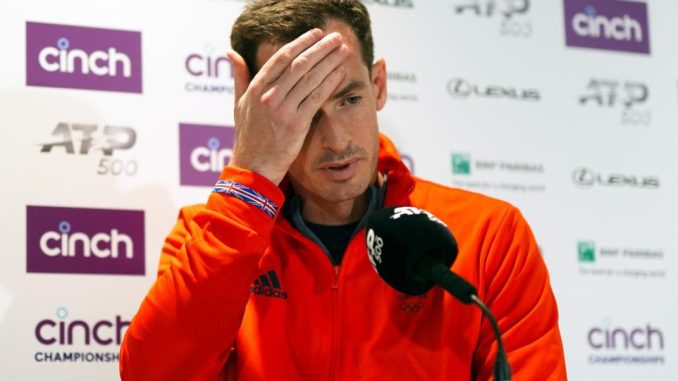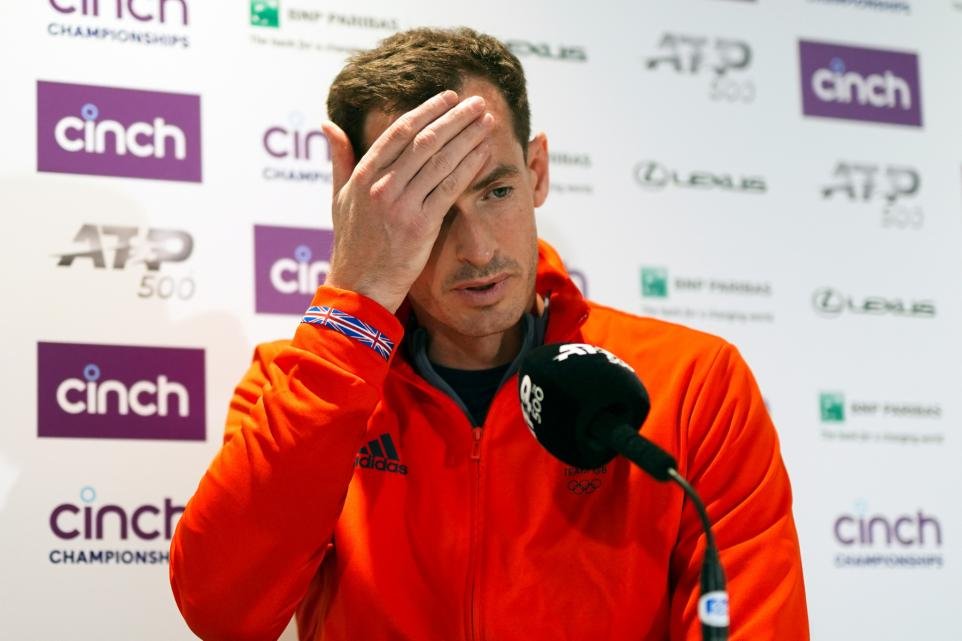
Following his retirement from professional tennis after a heartbreaking loss at the 2024 Paris Olympics, Andy Murray has officially stepped away from the competitive tennis circuit. However, the three-time Grand Slam champion hasn’t left the sport entirely.

In a surprising twist, Murray has transitioned into a different role within tennis while finding himself at odds with fellow British player Dan Evans, now considered his rival in this new chapter.
### Murray’s Post-Retirement Role and the Public Change
After over 15 years at the pinnacle of tennis, Murray’s retirement was met with an outpouring of tributes. Fans and analysts alike celebrated his remarkable career, highlighting his determination, resilience, and ability to overcome career-threatening injuries, particularly his well-documented hip surgeries.
Although many speculated he might retire quietly or take on roles such as coaching or punditry, Murray chose a less conventional path that has taken him back to the heart of competition—this time as a mentor and strategic advisor for the Lawn Tennis Association (LTA) and Team GB.
Murray’s role is multifaceted, involving direct player development, strategy consulting, and helping shape the future of British tennis.
His main focus has been on mentoring the next generation of British players, offering insights from his vast experience, and helping them prepare for the physical and mental challenges of the ATP and WTA tours.
This public change in his career has been met with mixed reactions—some see it as a natural fit for a player of his stature, while others were surprised by the intensity of his new role, considering the emotional toll his final years on tour took on him.
### The Rivalry with Dan Evans
While Murray’s transition into his new role was mostly celebrated, tension soon arose with Dan Evans, one of Britain’s leading active players.
Evans, a talented yet outspoken figure on the ATP tour, has never been shy about expressing his opinions, often criticizing the LTA and British tennis infrastructure for its perceived inefficiencies.
As Murray began working closely with British prospects, Evans reportedly felt sidelined, leading to friction between the two.
The rivalry between Murray and Evans, which has now moved beyond the court, can be traced back to their differing perspectives on British tennis development.
Evans has long advocated for a more individualized approach to player growth, stressing the need for players to be given independence rather than relying heavily on centralized systems.
Murray, on the other hand, believes in a more holistic development structure, emphasizing the importance of discipline, mental resilience, and the value of working within a well-organized support network.
Their differing views came to a head when Murray’s role expanded to advising Team GB’s Davis Cup and Olympic selections.
Evans, who has been a stalwart of the British Davis Cup team and a key contributor to their success in recent years, was reportedly unhappy with some of Murray’s decisions, including selections and training methods.
This led to public statements from Evans, where he questioned the direction British tennis was taking under Murray’s influence, suggesting that his fellow Brit might be out of touch with the modern demands of the ATP Tour.
### Public Spat and Media Reactions
The tension between the two players became public when Evans openly criticized some of Murray’s strategic choices during press conferences and interviews.
He argued that Murray’s perspective, while valuable, might be overly rooted in his own experiences from an earlier era of tennis and less applicable to the current crop of young players who are navigating a rapidly evolving tennis landscape.
In response, Murray, known for his candid nature, didn’t hold back. He defended his approach, stating that while tennis has evolved, the fundamental principles of preparation, discipline, and mental fortitude remain the same.
Murray emphasized that his experience as a multiple Grand Slam winner and former world No. 1 puts him in a unique position to guide young players through the challenges they will face. He also pointed out that his role isn’t to replace individual coaches but to provide broader strategic input and help build a stronger British tennis culture.
The media has closely followed this unfolding rivalry, with pundits taking sides. Some have backed Evans, arguing that he represents the active player’s perspective and is more in tune with the current realities of life on tour.
Others have supported Murray, noting that his track record speaks for itself and that his commitment to British tennis, even after retiring, should be respected.
The debate has sparked wider discussions about what approach is best for nurturing talent in a competitive tennis landscape that has seen the dominance of big names like Djokovic, Alcaraz, and Medvedev.
### What’s Next for Murray and Evans
Looking ahead, the tension between Murray and Evans could have implications for British tennis, particularly regarding team selections and the overall direction of the LTA’s player development strategy.
Murray’s influence extends beyond just coaching and strategy—he is also involved in shaping long-term plans for British tennis. Whether this tension can be resolved or becomes a permanent rift remains to be seen.
For Evans, maintaining his status as Britain’s top active player remains his priority. However, the public nature of his rivalry with Murray could put him in an uncomfortable position with both fans and other players, especially as he continues to voice concerns about British tennis governance.
There’s also the possibility that this friction could impact team dynamics during future Davis Cup or Olympic campaigns, where cooperation is crucial.
### Broader Implications for British Tennis
The rivalry between Murray and Evans highlights a broader issue in British tennis—the balance between respecting the legacy of past champions while embracing new ideas that address the current competitive environment.
Murray’s contributions as an ambassador and mentor are invaluable, but his traditionalist approach could clash with those seeking more contemporary solutions to challenges faced by today’s players.
At the same time, Evans’ willingness to speak out against the status quo reflects the growing trend of athletes being more vocal about their professional environments.
His critique of the LTA is part of a larger conversation in global sports about player empowerment and the role of governing bodies in adapting to the modern era.
In summary, Andy Murray’s post-retirement chapter as a key figure in British tennis has sparked a rivalry with Dan Evans, exposing underlying tensions about the direction and future of tennis development in the UK.
Whether this tension will result in constructive changes or lead to deeper divides within British tennis remains a significant storyline as the sport evolves.
Leave a Reply